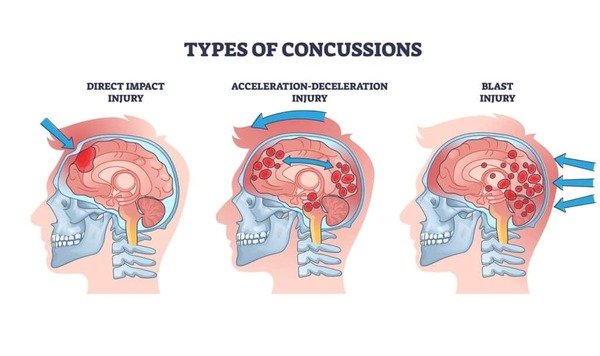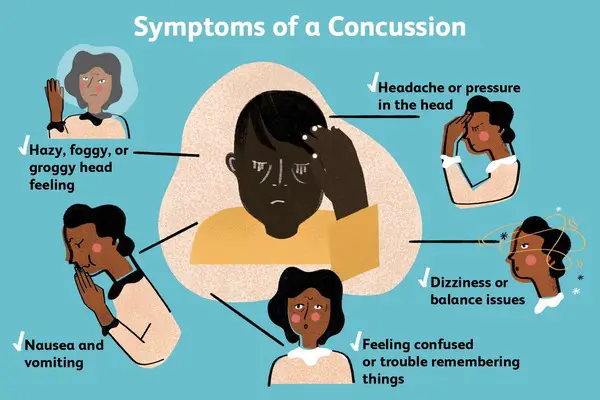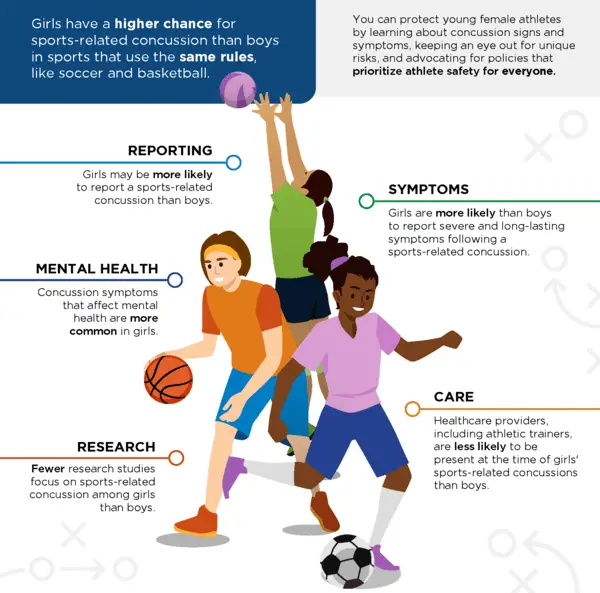The recent concussion injury to NFL New Orleans star wide receiver Chris Olave highlighted the importance for increased concussion awareness and the significance for concussion prevention. Estimates range on the frequency of concussions in the United States, ranging from 1.7 million to almost four million cases annually. The huge disparity can be attributed to the fact that perhaps almost 50% of concussions go unreported each year.
Sports-related concussions, while highly publicized, actually account for only about 15% of all concussion injuries. A concussion, a type of traumatic brain injury (TBI), occurs most frequently with falls. Almost 50% of all TBI-related Emergency department visits, hospitalizations, and deaths are caused by falls. The biggest categories of those injured are young children and older adults.

Concussion Prevention: Understanding the Causes and Symptoms of Concussions
A concussion is caused by a bump, blow, or jolt to the head, or by a hit to the body that causes the head and brain to move rapidly back and forth. This sudden movement can alter the shape of brain tissue, resulting in stretching and damage to the cells. A concussion is seen medically as an immediate alteration in brain function, including changes in mental status and level of consciousness. See NFL Ticket Exchange: Your source for all NFL tickets.
Signs and symptoms of a concussion may not appear immediately after the injury, but can develop over time. Concussion awareness signs and symptoms include headache, confusion, or feeling dazed. Other signs and symptoms can include dizziness, balance problems, nausea or vomiting as well as sensitivity to light or noise. Additionally, memory problems, difficulty concentrating, sleep disturbances, and mood changes such as anxiety, depression or irritability may present themselves. These symptoms can have a significant impact on an individual’s daily life and activities.
The Increased Vulnerability of Children to Concussions
Children are at a higher risk of concussions due to their increased participation in activities that carry concussion risks, such as sports and recreational activities. Their lack of ability to judge risks as well as greater impulsivity all contribute to the increased risk for a concussion. Physically, children are also at a greater risk for concussions. Their larger head size, relative to body size, as well as weaker neck muscles, contribute to the risk. Children also have thinner skull bones. Because children’s brains are still developing, they are more vulnerable to the chemical and metabolic changes that can occur during a concussion.
Chris Olave’s recent fourth concussion in his brief two-year NFL career highlights and affirms the thought that individuals who have experienced a concussion are at a higher risk for subsequent concussions. The concept of “second impact syndrome” highlights the dangers of sustaining a second concussion before fully recovering from the first. This can occur with multiple concussions, and the risk is higher in contact sports like boxing, football, ice hockey and soccer. Second impact syndrome can lead to rapid and severe brain swelling, which can be life-threatening.

Preventative Measures for Older Adults to Minimize Fall Risks
The other high-risk population for sustaining a concussion or Traumatic Brain Injury (TBI) are older adults. There are several preventative measures that can help minimize fall risks for this group. Home modifications can play a significant role in fall prevention, such as removing tripping hazards like loose rugs and electrical cords. One can add non-slip mats in bathrooms, and ensure adequate lighting throughout the home. Regular vision and hearing tests, proper footwear, and the use of assistive devices like canes or walers can greatly enhance safety for older adults and reduce their risk of falling and sustaining a concussion. See Osprey Lifestyle gear for hiking, biking and travel.
In returning to sports, football is the sport with the greatest frequency of sports-related concussions. For female athletes, soccer is responsible for the highest percentage of concussions. Women suffer concussions about twice as often as male participants in soccer. One of the biggest factor is due to differences in neck strength. LivWell Nutrition: Nourish your Body & Well Being.

As about 50% of concussions go unreported or undetected annually, the need for increased awareness and better diagnostic protocols needs to increase as well. If you feel that you may have sustained a concussion, it is crucial to seek medical attention immediately for personalized care and guidance. The information provided here is for educational purposes and should not be taken as medical advice. Proper diagnosis and management of concussions are essential for preventing long-term complications and ensuring a safe and complete concussion recovery.
Barry Schustermann
Follow me on X @BarrySchust
Follow me on Facebook @Barry Schustermann
External References:
1 Centers for Disease Control and Prevention (CDC) – Traumatic Brain Injury & Concussion
https://www.cdc.gov/traumatic-brain-injury/index.html
2 National Institute of Neurological Disorders and Stroke – Traumatic Brain Injury Information Page
https://www.ninds.nih.gov/health-information/disorders/traumatic-brain-injury
3 American Association of Neurological Surgeons – Concussion
https://www.aans.org/en/Patients/Neurosurgical-Conditions-and-Treatments/Concussion
4 Mayo Clinic – Concussion
https://www.mayoclinic.org/diseases-conditions/concussion/symptoms-causes/syc-20355594
5 Brain Injury Association of America – About Brain Injury
https://www.biausa.org/brain-injury/about-brain-injury



